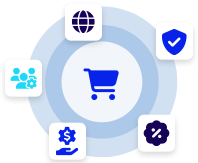Contract signing is the formal step where parties involved in an agreement put their signatures on a document, signaling that they agree to all terms outlined within it.
In the SaaS industry, contract signing typically happens between a vendor (the SaaS provider) and a business client (B2B customer). This agreement is crucial for establishing the responsibilities, expectations, and deliverables for both parties. When a contract is signed, it signifies a mutual understanding of the scope of services, payment terms, data handling responsibilities, and renewal conditions, all key aspects in SaaS deals where terms can evolve with changing business needs.
For SaaS companies, contracts are often foundational to maintaining a steady stream of recurring revenue, as the agreed-upon terms outline the subscription or usage fees that the client will pay for the software services over a specified period. This phase of signing contracts marks the beginning of the legal and operational relationship, with both parties bound to the terms they’ve agreed upon, making it essential to cover all bases before signing.
Key Components in SaaS Contract Signing
A signed contract in the SaaS industry includes specific details that cater to the unique needs of software and data handling agreements. Typical elements include the duration of the contract, subscription fees, data usage and privacy policies, service-level agreements (SLAs), and termination clauses. For B2B SaaS providers, it’s also common to define metrics for performance and reliability to set expectations around uptime and support, offering clients confidence that they will receive the level of service they expect.
Contract signing also often involves negotiations, where both parties discuss and adjust the terms to ensure that the agreement serves both their interests. For instance, a business may request more flexible payment terms, or a SaaS provider may include clauses to manage overage fees if the client’s usage exceeds their subscription limits. Once both parties are satisfied, the contract signing takes place, finalizing these details and cementing their partnership.
The Modern Shift to Digital Signatures
Traditionally, contract signing was a manual process requiring physical signatures. In today’s SaaS industry, digital signature solutions have transformed this step, making it faster and more efficient. Digital signatures allow contracts to be securely signed from anywhere, which is particularly useful in B2B agreements involving international clients. Digital tools not only streamline the signing process but also provide additional layers of security, including encryption and digital certificates, ensuring that each signed contract is authentic and tamper-proof.
By digitizing contract signing, SaaS providers can expedite the onboarding process and focus on delivering value from day one. For B2B clients, the use of digital signatures reduces paperwork and provides a transparent way to store and reference contracts, which is helpful for renewals and future audits. This move to digital platforms has made signing contracts a more seamless and integral part of the SaaS business model, allowing both providers and clients to form agreements quickly, securely, and conveniently.













